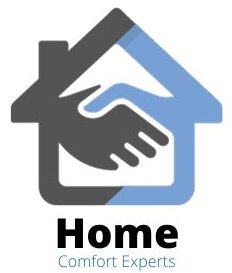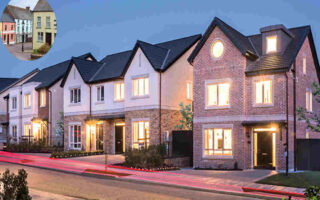Imagine stumbling upon a building that looks like it jumped straight out of a fairy tale—twisted tree trunks for walls, giant animal sculptures climbing the roof, and rooms that feel like secret caves. That’s the magic of the Crazy House, a place that sparks curiosity in everyone who hears about it. If you’ve ever wondered what the crazy house is, you’re not alone. This quirky landmark isn’t just a house building; it’s a wild adventure in creativity.
What Is the Crazy House?
Defining the Crazy House and Its Appeal

So, what exactly is the Crazy House? At its core, it’s a one-of-a-kind guesthouse that doubles as an art installation. Picture a structure that mimics a giant, twisted tree house, with rooms carved into organic shapes and hallways that wind like forest paths. It’s not your typical hotel—it’s a living sculpture where guests can stay overnight in rooms themed around animals or nature. This place draws in adventurers, artists, and families alike. You might wonder why it’s so popular. The answer lies in its sheer uniqueness. In a sea of modern skyscrapers, the Crazy House stands out as a playful escape. It invites you to question what a building can be. Have you ever stayed in a place that feels like it’s growing around you? That’s the thrill here.
Where You’ll Find This Architectural Gem
Location plays a significant role in the Crazy House’s charm. Nestled in the cool, misty highlands of Dalat, Vietnam—a city known for its French colonial vibes and pine forests—this spot feels like it’s hidden in a storybook. Dalat is situated in the Central Highlands, approximately 300 kilometers north of Ho Chi Minh City. The surrounding landscape, with its rolling hills and fresh air, perfectly complements the building’s nature-inspired design.
The Visionary Creator Behind It All
The mastermind of the Crazy House is Đặng Việt Nga, a talented architect born in 1940. She studied in Moscow and drew inspiration from greats like Antoni Gaudí, the Spanish genius behind Barcelona’s Sagrada Família. Nga wanted to create something that fused human ingenuity with the natural world. Her vision? A building that evokes freedom, creativity, and harmony with the friendly environment. Nga started building in 1990, pouring her life savings and passion into it. She didn’t just design it—she lived in it, tweaking details over decades. Today, at over 80 years old, she continues to oversee the place. Her story inspires many: What if you chased your wildest dreams, no matter the obstacles? Nga’s journey shows that one person’s “crazy” idea can become a global icon.
A Quick History and Timeline of Construction
The Crazy House’s story began in the late 1980s when Nga returned to Vietnam after years abroad. Construction kicked off in 1990, but it wasn’t smooth sailing. Local authorities initially saw it as too eccentric and tried to shut it down. Nga persisted, turning it into a guesthouse to fund the project. By 1995, the first rooms opened to visitors. Over the years, it expanded with more wings, sculptures, and gardens. A significant milestone came in 2000 when it gained official recognition as a cultural site house. Today, it’s still evolving—Nga regularly adds new elements. This timeline highlights its resilience: from a risky dream in 1990 to a beloved landmark by the 2020s.
Why the Nickname “Crazy House” Fits Perfectly
The name “Crazy House” stuck because of its utterly unconventional look. Locals and tourists alike called it that due to its wild, unpredictable design—no straight lines, just curves and surprises everywhere. It’s not “crazy” in a bad way; it’s playfully chaotic, like a dream you can’t forget. This nickname captures its essence: a rebellion against normalcy. In Vietnamese, it’s Hằng Nga, named after a moon goddess, but the “Crazy House” has gained worldwide fame. Think about it—would you rather visit a “standard hotel” or a “crazy” wonder? That’s the hook that draws millions.
Unique Architectural Features of the Crazy House

Understanding What Makes the Crazy House Unique in Style
Diving deeper into what is known as the Crazy House, its architecture screams originality. It falls under the category of organic architecture, where buildings mimic nature’s forms rather than adhering to rigid grids. Think surrealism meets fantasy—curvy walls, uneven roofs, and spaces that flow like rivers. Unlike boxy modern homes, this place feels alive. Nga designed it to blend with Dalat’s forests, using shapes inspired by trees, animals, and even fairy tales. You won’t find sharp corners here; everything curves and twists, creating a sense of movement. Reader, imagine walking area through a building that whispers stories— that’s the Crazy House’s magic.
Inspirations from Nature and Fantasy Worlds
Nature is the biggest muse for the Crazy House. Nga drew inspiration from Dalat’s pine trees, mushrooms, and wildlife, incorporating them into the structural elements. For instance, staircases spiral like vines, and rooms resemble animal dens. Fantasy plays a role too—think Alice in Wonderland meets Gaudí’s whimsy. She also incorporated Vietnamese folklore, with motifs of dragons and spirits. This blend makes the architecture feel timeless. Have you ever seen a building that resembles a giant spider’s web or a house blooming flower? That’s how Nga infused fantasy, making it a playground for the imagination.
Distinctive Design Elements That Stand Out
Let’s break down the standout features. Twisting shapes dominate—hallways wind unpredictably, leading to hidden nooks. Unconventional materials, such as concrete molded into organic forms, recycled glass, and wood, add texture and depth. Nature themes shine through in house rooms named after animals, such as the “Tiger Room” and the “Eagle Room,” each with intricate, carved details.
Contrasting with Traditional Building Designs
Traditional architecture emphasizes symmetry and functionality—characterized by straight lines and efficient layouts. The Crazy House flips this script. It prioritizes emotion and surprise over practicality. No two rooms are alike, and navigation feels like an adventure, not a chore. This contrast challenges norms. While skyscrapers aim for height and efficiency, the Crazy House embraces imperfection. It’s smaller in scale but infinite in wonder. Reader, what if more buildings followed this path? It could make cities more joyful.
The Magic of Handcrafted Elements and Artistic Touches
Every inch of the Crazy House is handcrafted. Nga and local artisans sculpted details by hand, from mosaic floors to intricate railings. This personal touch adds soul—imperfections become charming quirks.
House Artistic details abound: stained-glass windows depict myths, and murals tell stories of nature. These aren’t mass-produced; they’re labors of love. It shows how craftsmanship elevates a building from functional to fantastic.
Structural Challenges and Clever Solutions
Building style something this wild wasn’t easy. Structural challenges included unstable foundations on hilly terrain and ensuring safety in curvy designs. Nga solved these challenges with innovative engineering—reinforced concrete for strength and hidden supports in “tree trunk” columns. She also used eco-friendly tricks, like natural ventilation, to keep it cool without AC. These solutions prove that creativity and practicality can coexist. It’s a testament to thinking outside the box—literally.
Cultural and Artistic Significance

A Symbol of Creativity and Architectural Freedom
The Crazy House isn’t just a building; it’s a bold statement on creativity. It symbolizes breaking free from rules, encouraging architects to dream big. In Vietnam, where colonial and communist influences shaped many structures, this place stands as a beacon of individuality. Nga’s work inspires artists worldwide. It shows that architecture design can be personal and expressive. Reader, think about your own creative pursuits—doesn’t this make you want to push boundaries?
Recognition from Architecture Communities and Media
The world has noticed. Architecture magazines like ArchDaily praise its surreal style. It’s featured in travel shows and documentaries, earning spots on “must-see” lists. In 2012, it even received UNESCO recognition for its cultural heritage. Media buzz amplifies its fame—think viral Instagram posts and YouTube tours. This recognition validates Nga’s vision, turning a “crazy” idea into respected art.
Blending Art, Architecture, and the Environment
What sets it apart is the seamless mix of art and nature. Architecture here isn’t separate from the environment; it’s part of it. Gardens integrate with rooms, promoting harmony. This blend challenges us to see buildings as ecosystems. It’s eco-art at its best, reminding us to respect nature in design.
Challenging Conventional Views of Functional Buildings
Traditionally, buildings prioritize utility—offices for work, living homes. The Crazy House questions this: Why can’t function be fun? It serves as a guesthouse but feels like an art gallery. This shift encourages rethinking spaces. Imagine schools or offices with similar whimsy—more engaging, right? It pushes boundaries, proving functionality and fantasy can thrive together.
Visitor Experience and Tourism

What to Expect When You Step Inside
Visiting the Crazy House is like entering a dream. You start at the entrance, greeted by towering sculptures and winding paths. Inside, explore themed room features—climb spiral stairs to a kangaroo-shaped suite or relax in a mushroom garden. It’s interactive: Touch the textured walls, snap photos, and lose yourself in the maze. Expect surprises around every corner. Reader, are you ready for an adventure that feels personal?
Popular Attractions Within the Building
Key highlights include the animal-themed room design, each with unique décor—such as the “Bear Room,” which evokes a cave-like vibe. The rooftop garden offers panoramic views of Dalat, dotted with bizarre statues. Don’t miss the central “Tree of Life” structure, symbolizing growth and renewal. Sculptures of giants and mythical creatures add whimsy. These spots make it a photographer’s paradise.




